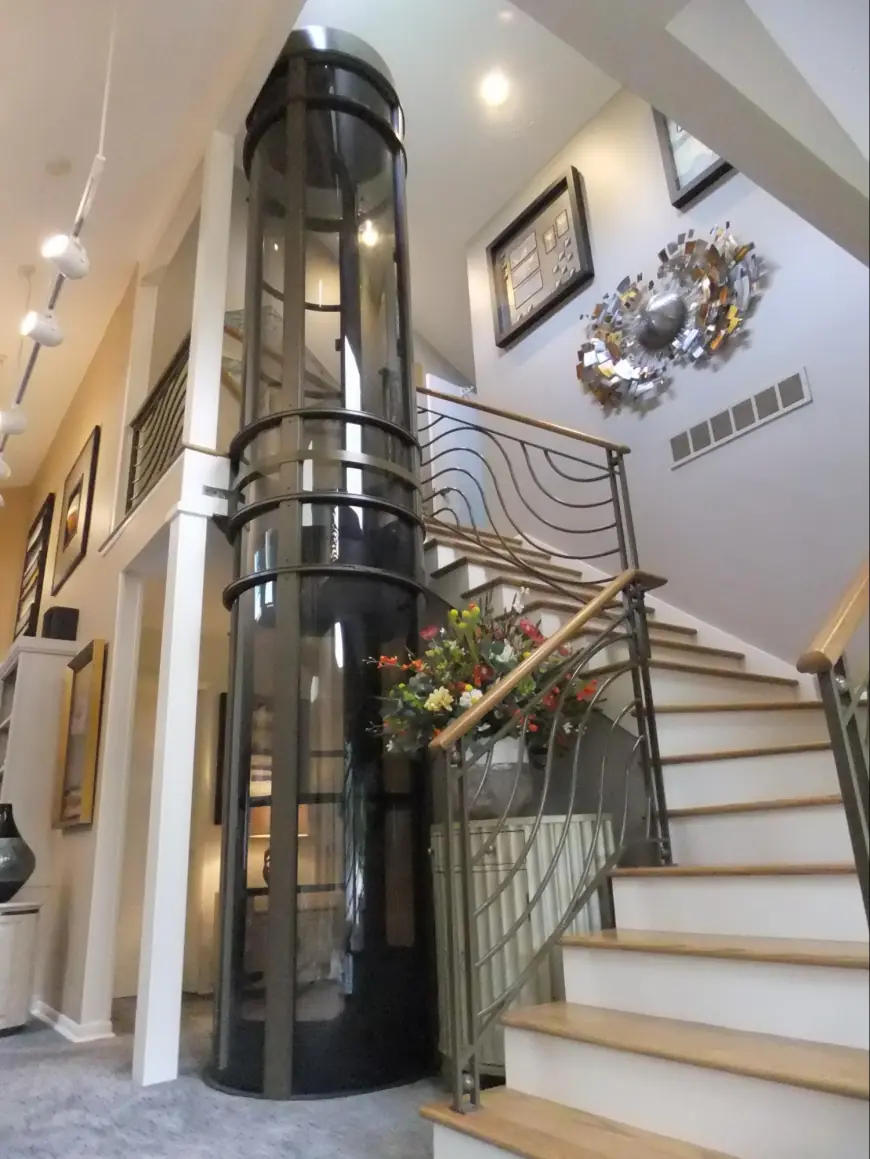Why Machine Room Less Elevators Are Reshaping Urban Architecture in India

As urban spaces grow denser and building footprints shrink, architects and developers are turning to smarter vertical transport solutions. One standout innovation? The machine room less elevator—a compact, energy-efficient system that’s transforming how we think about lift design, installation, and long-term maintenance.
Whether you're upgrading a residential tower in Noida or designing a boutique hotel in Rudrapur, choosing a machine room less lift can unlock space savings, reduce construction costs, and elevate your building’s appeal.
Let’s explore why this technology is gaining traction across India’s built environment.
? What Is a Machine Room Less Elevator?
A machine room less elevator (MRL) is a traction-based lift system where the motor and controller are housed within the hoistway itself—eliminating the need for a separate machine room. This design is ideal for low- to mid-rise buildings and is especially popular in space-constrained urban projects.
Key features include:
-
Gearless traction motor mounted in the shaft
-
Compact control panel near the landing door
-
No need for a rooftop or basement machine room
-
Energy-efficient operation with regenerative braking
This streamlined setup makes the machine room less lift a go-to choice for modern buildings prioritizing aesthetics, sustainability, and cost-efficiency.
? Benefits of Machine Room Less Lifts
Here’s why developers and suppliers are embracing MRL technology:
| Benefit | Impact on Projects |
|---|---|
| ? Space Optimization | Frees up valuable floor area for other uses |
| ⚡ Energy Efficiency | Reduces power consumption by up to 30% |
| ? Lower Construction Cost | No need for separate machine room |
| ? Simplified Maintenance | Fewer moving parts, easier access |
| ? Design Flexibility | Enables sleeker architectural integration |
For builders in Delhi NCR, where every square foot counts, the machine room less elevator offers a compelling value proposition.
?️ Applications Across Building Types
MRL systems are versatile and can be deployed in:
-
Residential apartments and builder floors
-
Commercial offices and co-working spaces
-
Boutique hotels and service apartments
-
Hospitals, clinics, and educational institutions
-
Retail outlets and showrooms
In Rudrapur’s industrial zones, machine room less lifts are increasingly used in administrative blocks and guest accommodations, where space and aesthetics matter.
? Comparing MRL vs. Traditional Elevators
| Feature | MRL Elevator | Traditional Elevator |
|---|---|---|
| Machine Room Requirement | None | Required (rooftop or basement) |
| Installation Time | Faster | Longer due to civil work |
| Energy Consumption | Lower | Moderate to high |
| Space Efficiency | High | Lower due to extra room needed |
| Maintenance Access | Shaft-mounted, easy | Requires access to machine room |
| Ideal Building Height | Low to mid-rise (up to 15 floors) | Mid to high-rise |
For most low-rise projects in Delhi NCR and Rudrapur, the machine room less lift is the smarter, more economical choice.
? What to Look for in a Supplier
When sourcing a machine room less elevator, consider these criteria:
-
Customization: Can they tailor cabin size, door type, and finishes to your project?
-
Compliance: Are lifts certified to EN81, IS standards, and fire safety norms?
-
Drive Technology: Gearless traction motors with VVVF drives offer smoother rides
-
Installation Support: Do they offer shaft design guidance and civil coordination?
-
After-Sales Service: AMC packages, remote diagnostics, and quick response times
A reliable supplier will provide detailed drawings, load calculations, and installation timelines upfront.
? Real-World Use Cases
Here are a few examples of successful MRL installations:
-
A builder floor in South Delhi added a 6-passenger machine room less lift with collapsible doors and stainless steel finish
-
A Rudrapur-based hotel installed a glass cabin MRL elevator to enhance guest experience and save rooftop space
-
A clinic in Noida deployed a compact MRL system with auto-rescue and fire-rated doors for patient transport
These use cases highlight the adaptability and ROI of MRL technology across sectors.
? Cost Breakdown & ROI
Prices for machine room less elevators in India typically range from ₹3.5 lakh to ₹12 lakh, depending on:
-
Load capacity (300 kg to 1000 kg)
-
Number of stops (up to 15 floors)
-
Cabin finish (MS, SS, glass)
-
Door type (manual, automatic, telescopic)
-
Safety features (auto-rescue, overload protection)
While initial costs may be slightly higher than hydraulic lifts, the long-term savings in energy, maintenance, and space utilization make MRL systems a smart investment.
? Final Thoughts
The machine room less lift isn’t just a technical upgrade—it’s a strategic design choice. For developers, architects, and suppliers in Delhi NCR and Rudrapur, MRL elevators offer a future-ready solution that balances form, function, and financial sense.
Whether you're building vertically or retrofitting an existing structure, choosing a machine room less elevator can elevate your project’s value, efficiency, and user experience.
What's Your Reaction?
 Like
0
Like
0
 Dislike
0
Dislike
0
 Love
0
Love
0
 Funny
0
Funny
0
 Angry
0
Angry
0
 Sad
0
Sad
0
 Wow
0
Wow
0
























































